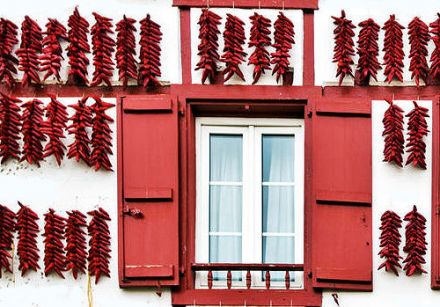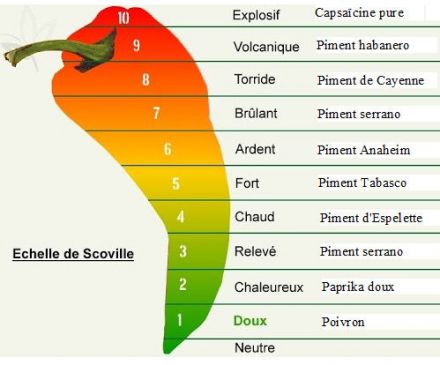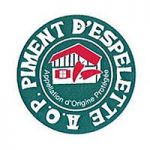 |
Capsicum annuum
French: Piment d'Espelette
Basque: Ezpeletako biperra
Espelette is not only the name of a chili that plays a signature role in Basque cooking, but is also the name of a small village tucked away at the base of a mountain, lined with winding streets decorated with bright red chilies that have been tied by hand, one at a time, onto strings. They are hung as garlands on the eaves of white Basque farm houses so the chilies can get a little sun before being ground into powder. In Espelette on the last weekend of October the chili is king, the star of an annual festival. It's not hard to see that this little vegetable holds a place of honor in Basque cooking!
Cultivated in this part of the Basque country for centuries, chilies were first thought to be part of the pepper family, and were originally used to flavor certain chocolate recipes, since Bayonne was in the 17th century the kingdom's leading chocolate producer.
It was also in the 17th century that a certain Father Larramendy established the relation between Castilian piper mina (black pepper), Spanish "pimenton" and Basque bipergorria (red pepper) which would cause chili powder to be categorized as a spice from then on.
Since the 18th century, ham from the Basque country has been coated with chili powder before being dried.
If you're in Basque country, make a point of stopping in Espelette because, like the chilies that grow there, the village has a unique flavor. It's also a center for raising Pottocks, sturdy little horses that were once used in English mines.

Espelette Pepper have a relative heat rating of four out of ten on the Scoville scale.



-

 Recipes
Recipes
-

 Products
Products
-

 Entertaining
Entertaining
-

 Chefs
Chefs
-

 Hints & Tips
Hints & Tips
-

 Glossaries
Glossaries








